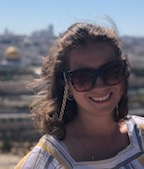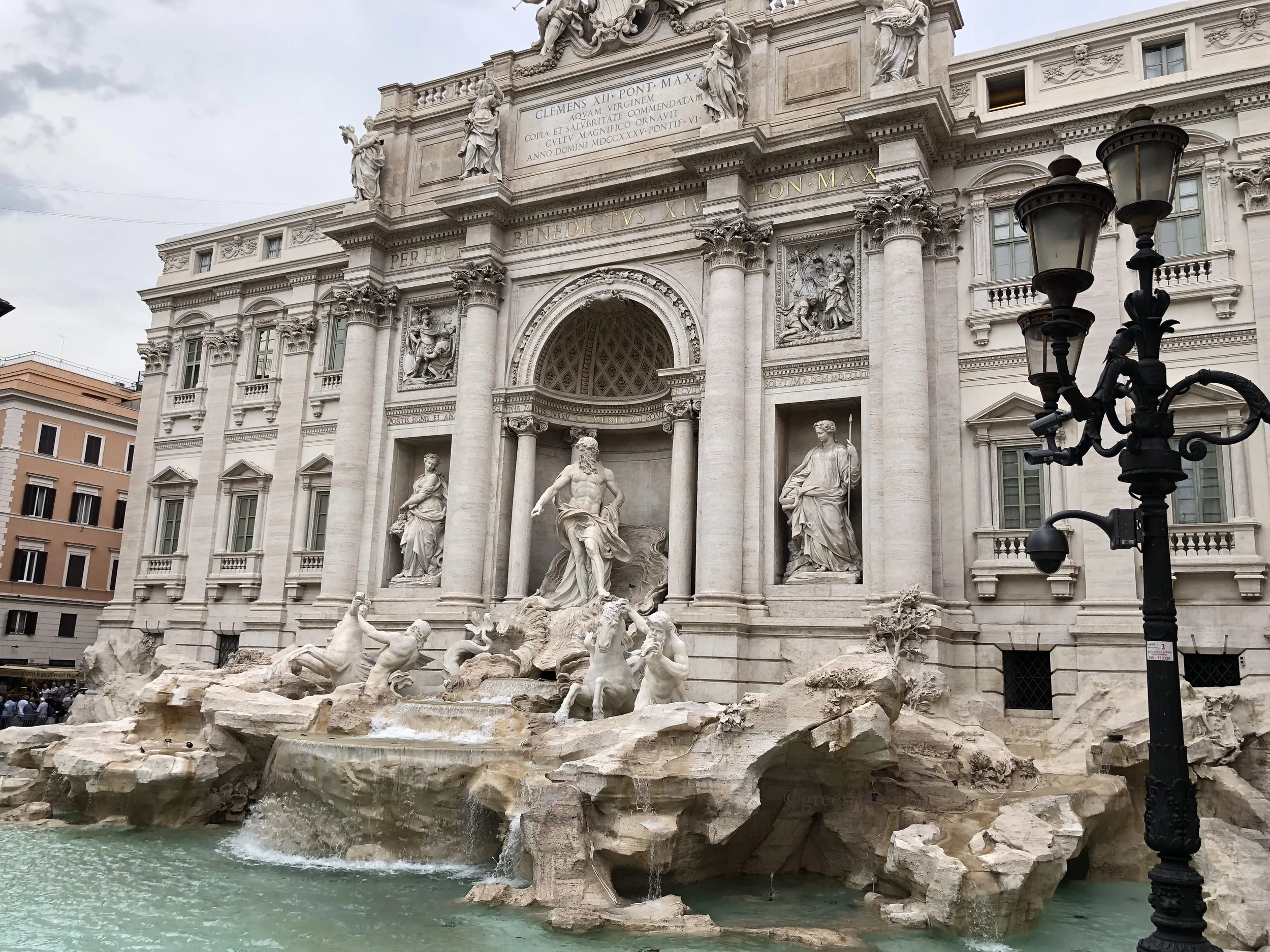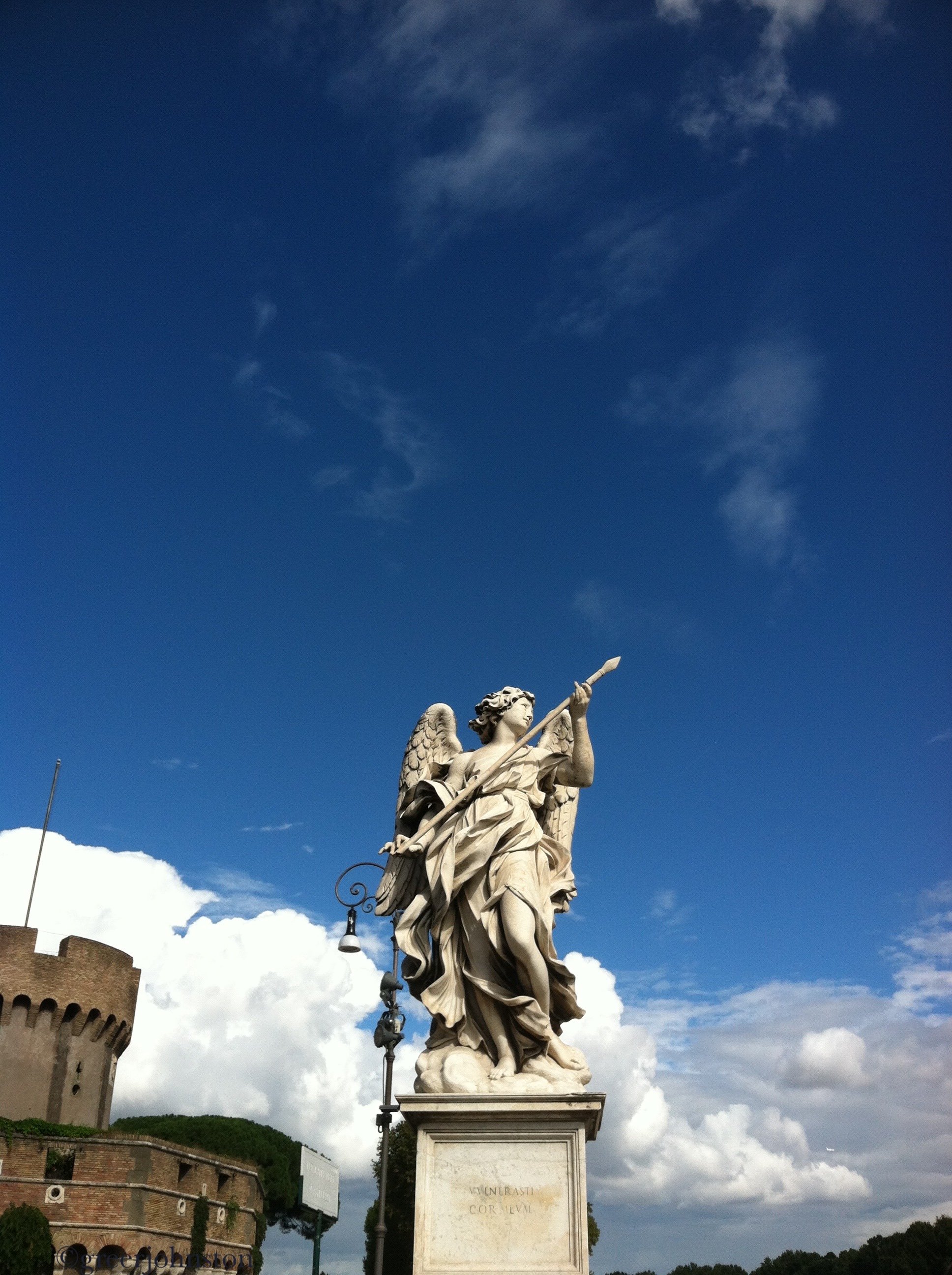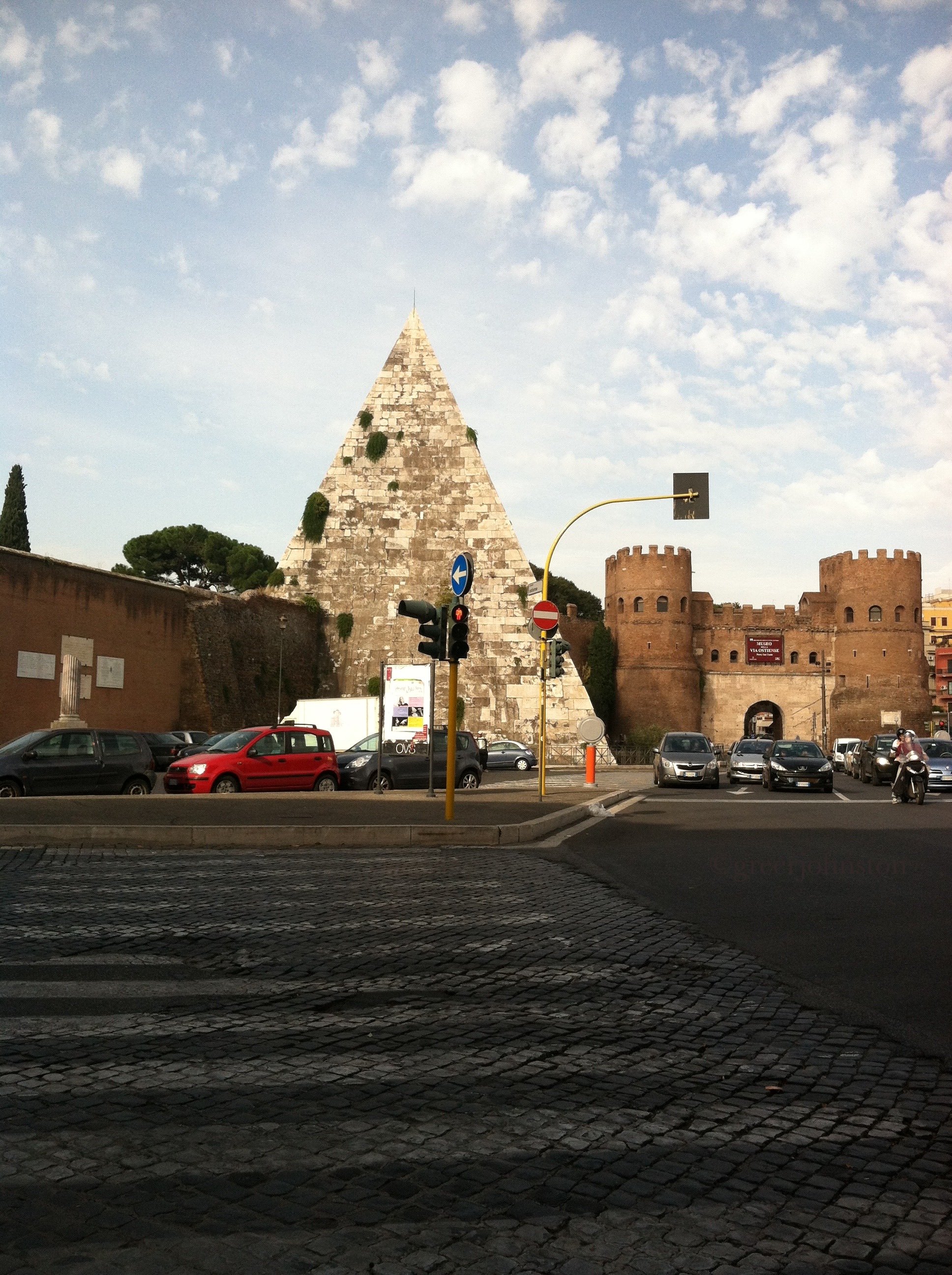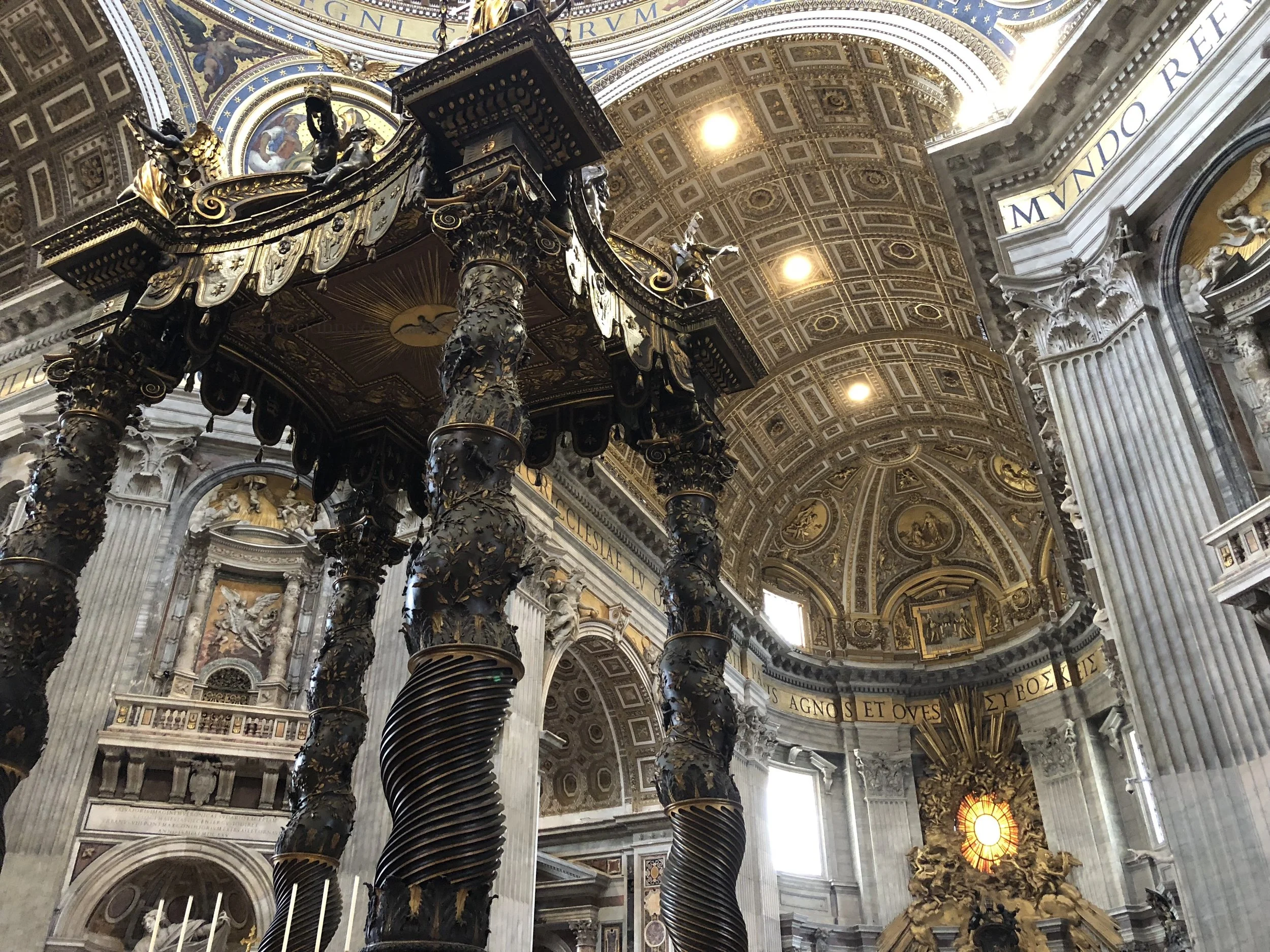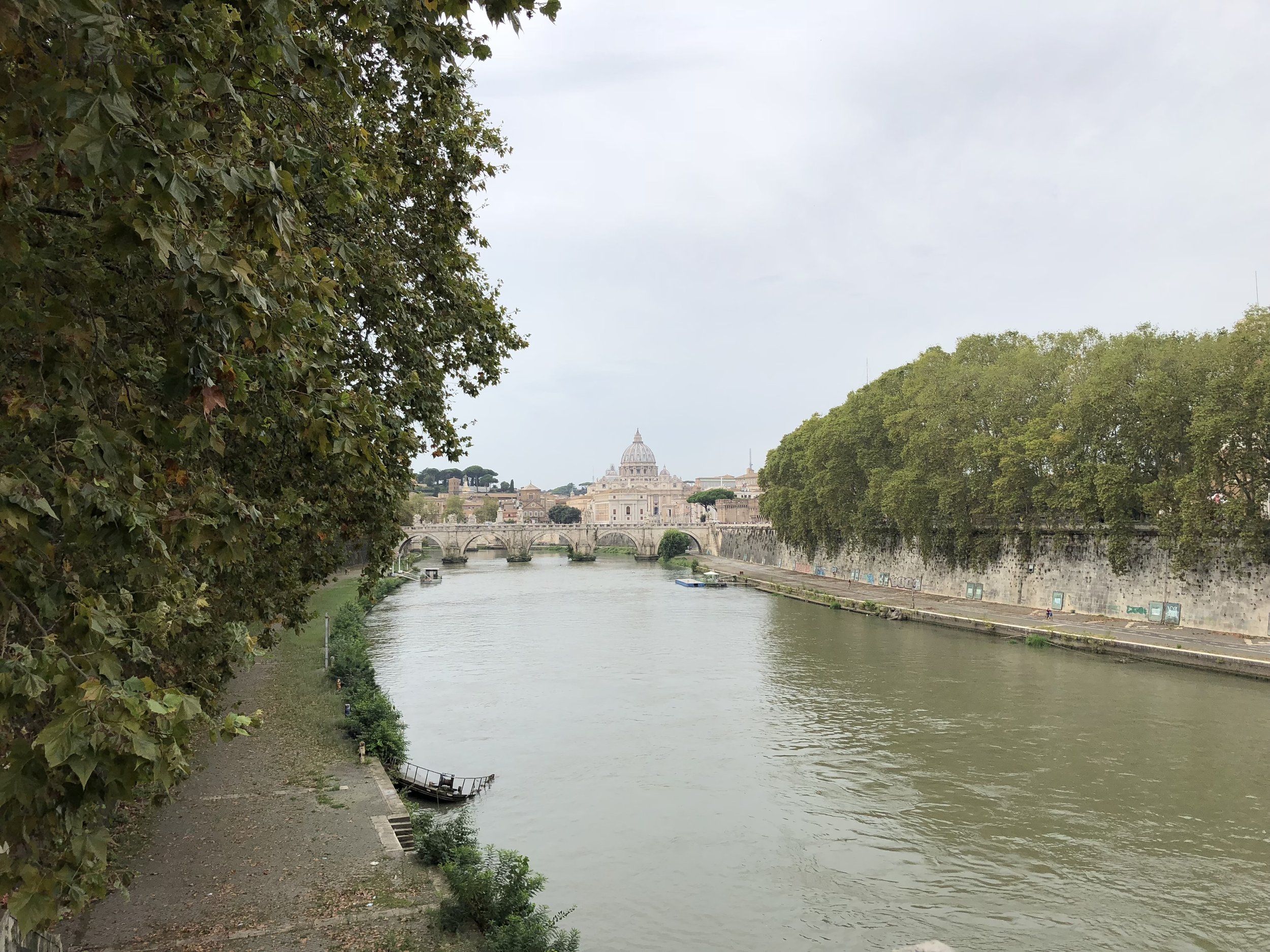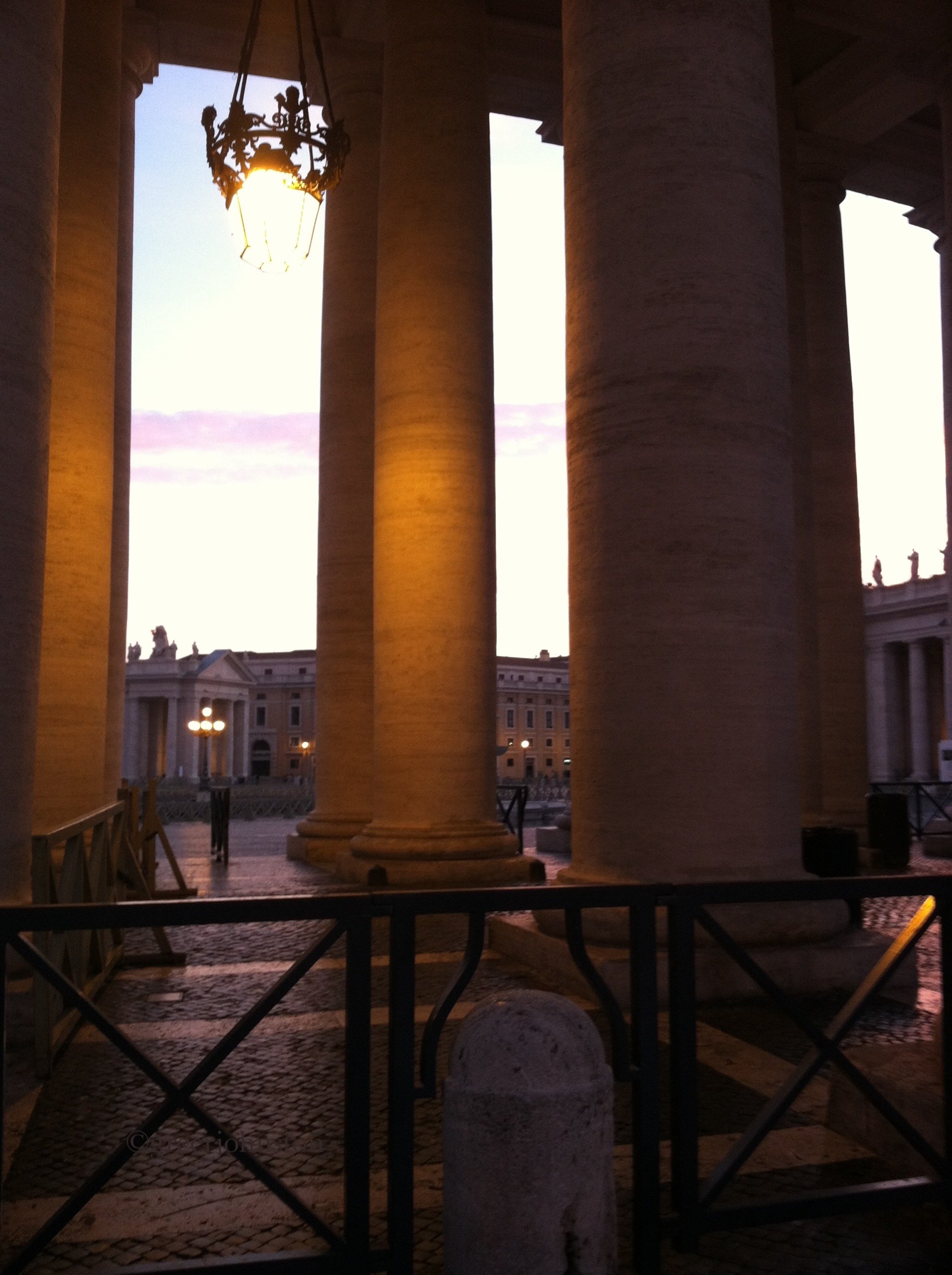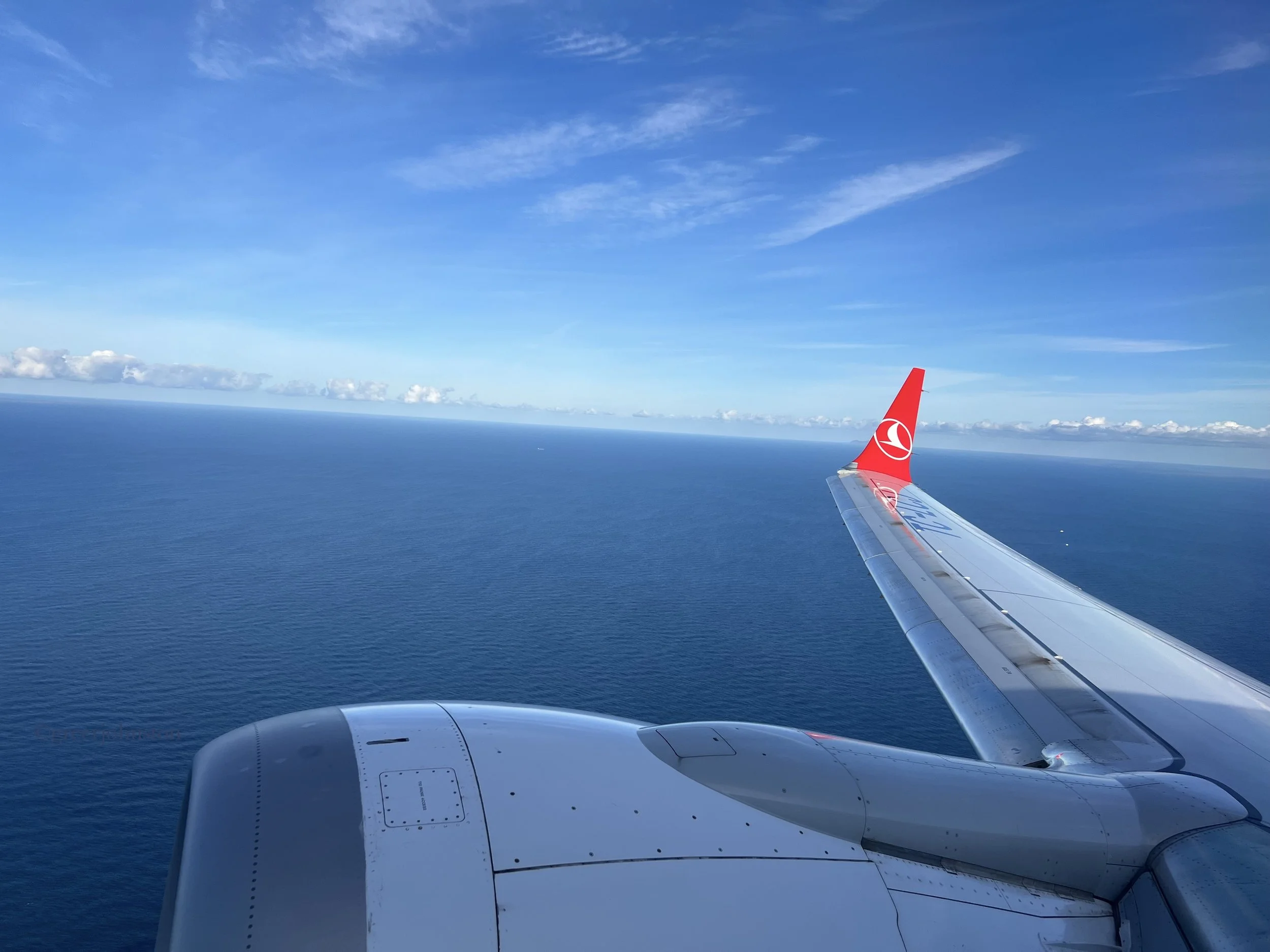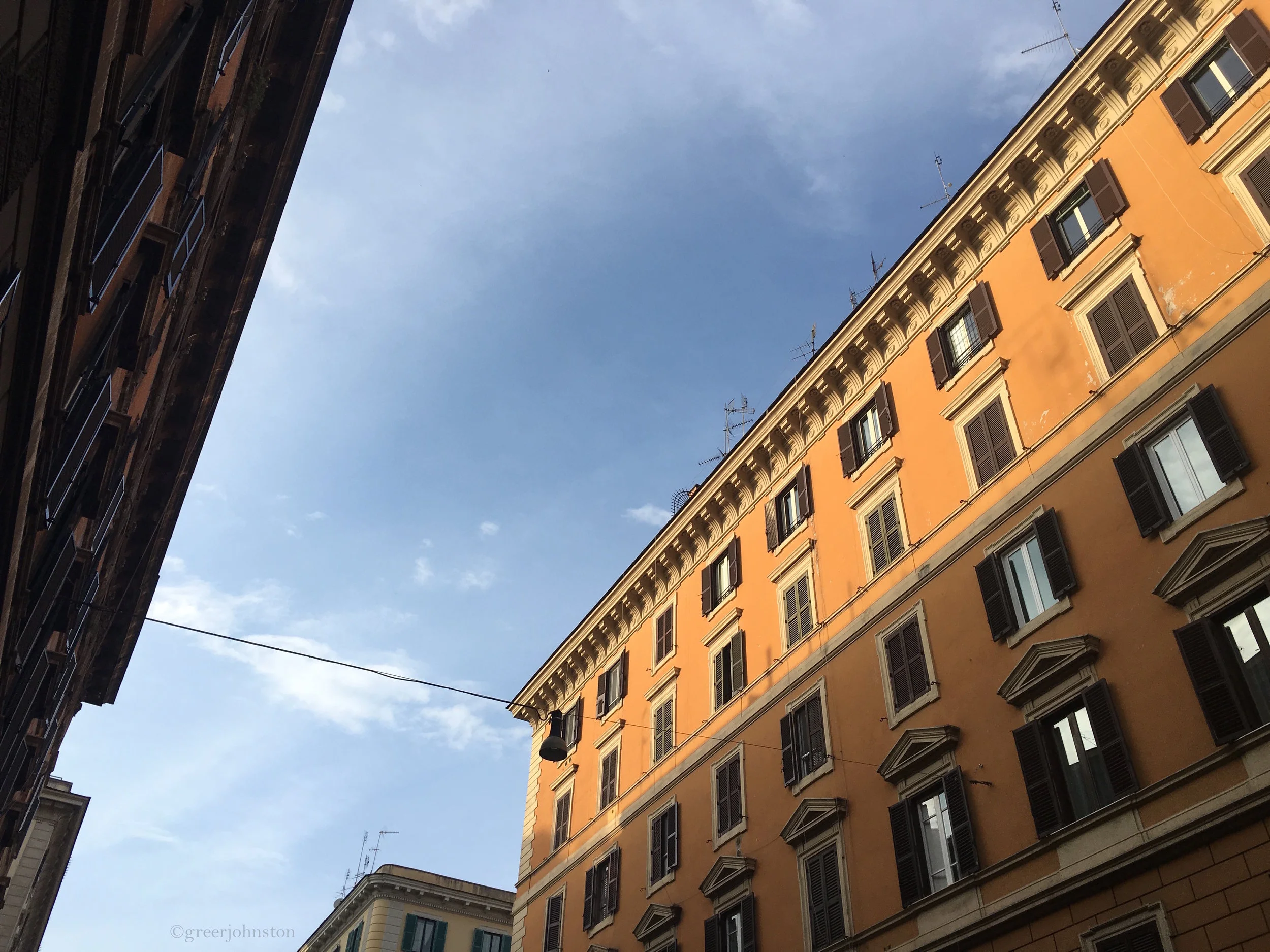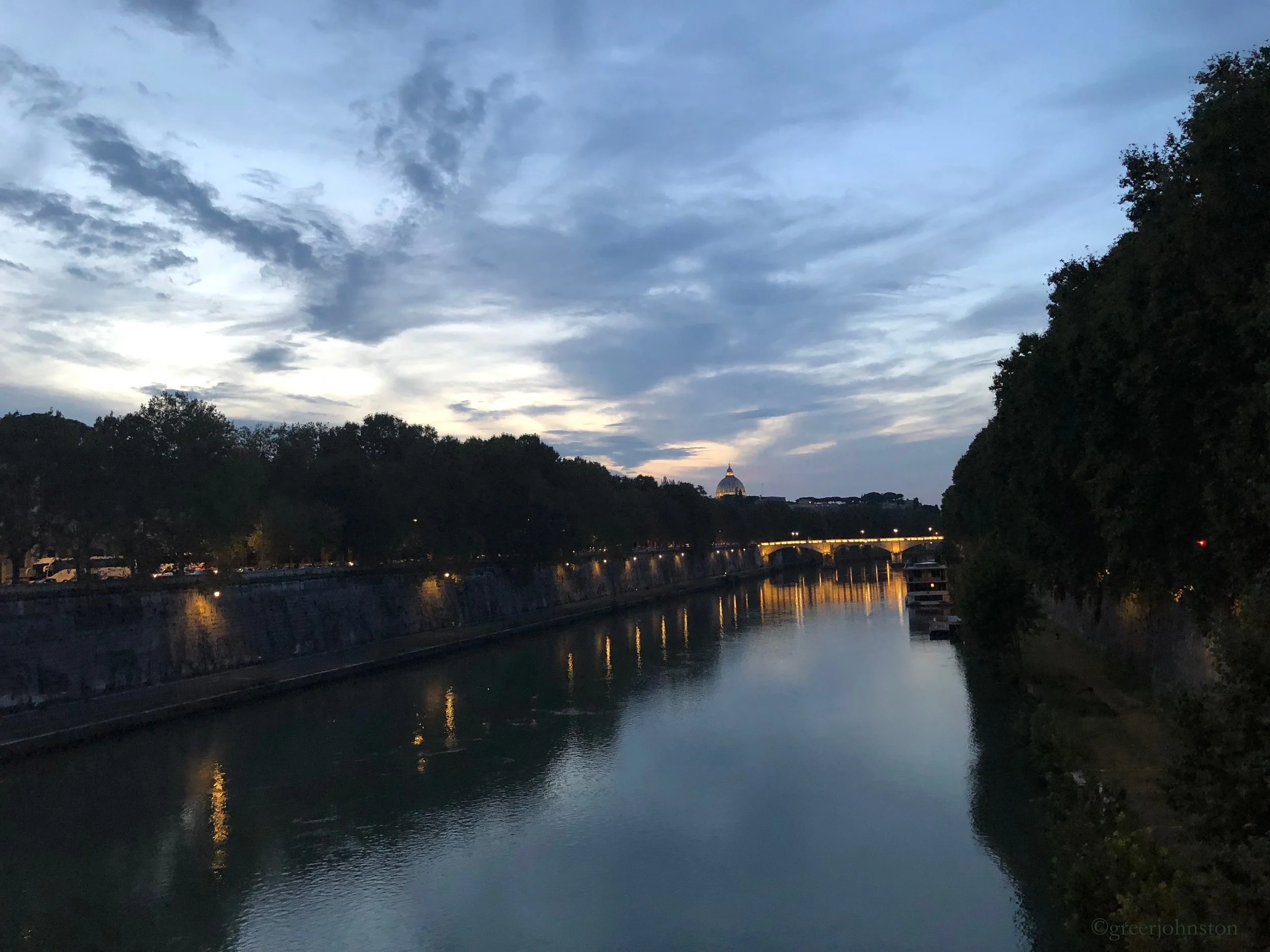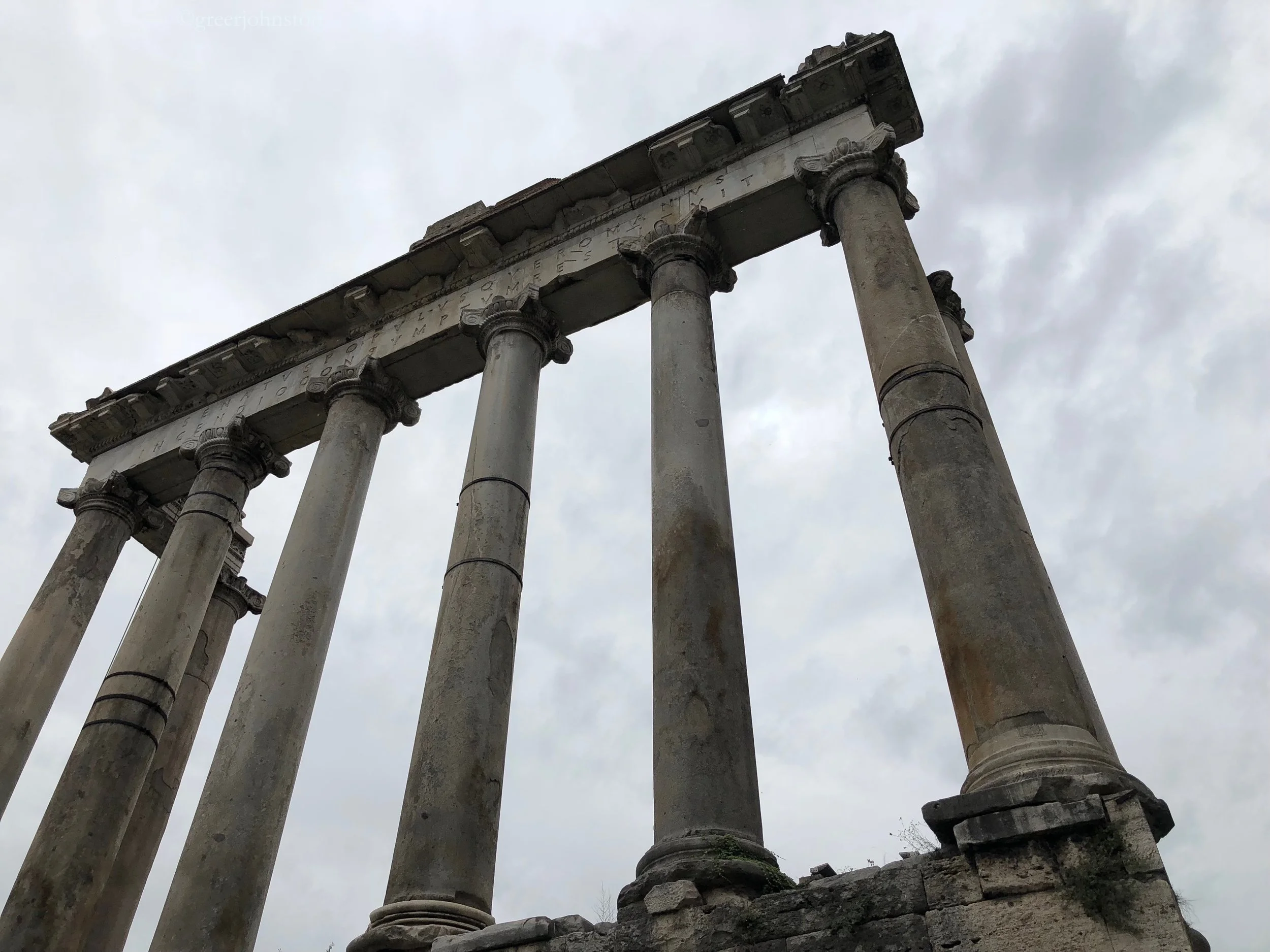Studying Abroad in Rome - John Felice Rome Center
As I was preparing to finish my first year at Loyola University Chicago, I got the idea to apply to study abroad at their Rome Campus, the John Felice Rome Center. I hadn’t really found my place at the university, and while I didn’t want to go through the process of transferring to a new university, I thought studying abroad could be just as much of a fresh start.
At the time, it was most common to study abroad for a semester in your junior year. Even my parents initially encouraged me to wait until then. But they also know that once I am set on something, it can be hard to change my mind. I applied to spend the full year abroad.
Twelve years ago, I arrived in Rome. I still remember the airport doors opening, and seeing palm trees stretched to the sky. In a way, I knew my fate had been sealed with Italy. But I couldn’t know the winding path that would first take me around the world before returning to live in Sicily.
The Rome Center was a perfect solution for me. I was happy to have the opportunity to live in Italy, a place I had longed to visit for years to see the land of my ancestors. It was also a fairly straightforward process, given that this campus was just an extension of my university.
I had already traveled to Europe, and I had already moved away from home to study in Chicago, but this would be a different caliber of adventure entirely. I signed up to study abroad for the year, meaning I would be away for four months until the Christmas break, and then return in January for the last five months. Sitting with my parents in the airport, I think we all had the same feelings: excitement, anticipation, and hating the idea of such a long goodbye.
Crossing the bridge, Ponte Sant'Angelo
When we arrived to the Rome Campus, located about a 20-minute drive north of the Vatican on Monte Mario, in the Balduina neighborhood, the staff was well prepared for our arrival. Just like an orientation at university, we were given all kinds of information related to the campus and to Rome, and a schedule of activities before classes started. We would have seminars on personal safety, Italian culture, and getting around Rome. We were encouraged to get off of campus as much as possible and to really experience being in Rome. I appreciated this approach. While it was very reassuring and convenient to have the Rome Center as a home base, the purpose of studying abroad is mainly to get out of your comfort zone. So even though it was intimidating at first, I very quickly began adventuring into the city on my own, and finding my way around.
At the time, like many of my peers, I had just gotten my first smartphone. However because it was locked, I was unable to use it as a phone except when on wi-fi. While it probably seemed annoying at the time, I now understand what a gift that was. It meant that when we left campus, we couldn’t take our apps with us. We couldn’t look up directions on the map; we couldn’t see what time the bus was coming. We weren’t taking car-sharing services. On campus, there was only wi-fi in the library and a small computer room. This meant that when we were hanging out anywhere else on- or -off campus, we were actually hanging out with each other. We weren’t just collectively sitting together, each person scrolling through their own social media. I feel like this gave us back a glimpse of the old days before technology had infiltrated every aspect of our lives. I am incredibly grateful, and incredibly nostalgic, for that.
It also meant that unless I was connected to wi-fi, I could not get in touch with people back home, and they could not get in touch with me. Luckily we adapted easily, but that combined with all the other reasons I have listed make me realize how important this experience was for establishing my independence. For the first time, I couldn’t just immediately call someone when I ran into an inconvenience. Of course, the Rome Center did provide us with “baby phones,” simple little mobile phones and with a local SIM card for emergencies.
My first steps in the Roman Forum
In addition to the informative sessions, our orientation also included little trips into the center and a day spent at the Colosseum and Roman Forum - essential for any first trip to Rome. After these few days, began the first week of classes. Almost of the classes here, whether they were based on literature or history or sociology, revolved around Italian topics. I had taken Italian 101 in the semester before arriving at the Rome Center, but if I hadn’t, that would have of course been a requirement. I did continue with my Italian while studying abroad.
After that first week of classes, there was a weekend orientation trip outside of Rome. In the three semesters that I studied abroad, our trips took us around the regions of Toscana, Campania, and Umbria.
The Piramide Cestia, an ancient tomb in Rome's Ostiense neighborhood
While we usually had Fridays off, and therefore long weekends to visit other parts of Italy or Europe, I often made the most of my time by heading out by myself or with a friend to explore different neighborhoods of Rome. And since this was before I could just follow along the map on my phone, this meant that even if I set out for the day with a destination in mind, I would sometimes get a little lost and stumble across unexpected surprises. Throughout my three semesters, and on subsequent trips back, I was able to wander through several of Rome’s distinct and characteristic neighborhoods, each with their unique personalities and offerings.
Another experience that helped me immensely to immerse myself in Rome were my on-site classes. Through these classes I was able to learn about art and archaeology - from antiquity, through the Renaissance and Baroque periods, and into modern and contemporary times - while standing directly in front of it. Not only did this mean that I was able to see art in person that I perhaps would have otherwise only read about in books, if at all, but by taking two of these classes in my first semester, I was constantly navigating Rome and Roman public transportation, which instilled in me a lot of confidence as a novice traveler.
Some of the art works I got to see as part of these classes which made a lasting impact included our on-site class in the Vatican’s St. Peter’s Basilica and the Vatican Museums, including the Sistine Chapel, as well as seeing three of Caravaggio’s works housed in the Chiesa di San Luigi dei Francesi near Piazza Navona.
Bernini's altar at St. Peter's Basilica, the Vatican
On the weekends I did decide to travel with friends, I was able to visit other cities in Italy like Florence and Venice. Often, we would run into other groups from the Rome Center who were traveling there as well. I also went on a few trips to visit friends who were living abroad in other European countries.
Windmills of Mykonos, Greece
I also took advantage of the study trips that were offered by the university as well. Mostly, these trips were aimed at discovering a new culture and seeing new places, although given that they were led by professors and often accompanied by incredibly knowledgable local guides, we also we learned a lot. I am very grateful for these trips, which included hiking and attending a traditional sagra, or food festival, in the Italian region of Abruzzo, attending a human rights conference in Poland, exploring an incredible amount of sites across different regions of Greece, and a memorable introduction to the Balkans in Serbia and Bosnia and Herzegovina. In these trips I not only had a lot of fun with my friends, but I also discovered so many new places I am not sure I would’ve had the opportunity to come across otherwise. I also learned so much about these different cultures and locations and made incredible memories. These experiences spurred me on to continue to seek out new experiences in places that some may consider off the beaten track.
In my second semester as a full-year student, I was also able to take advantage of the internship program, where I worked in social media for the first time assisting a TEDx event focused on religious freedom. This made for an interesting experience, commuting to the team’s office at a local university to work. It definitely gave me a glimpse into what daily life living in Italy could look like.
For me, one of the most important aspects of my time at the Rome Center was in the social realm. In the past, I hadn’t always been able to easily find people to connect with. But that changed at the Rome Center. I think because I automatically had something in common with the people I found there: they had also made the not-always-easy decision to study abroad, they were interested in Italy, and several of them also came from Italian-American backgrounds like me. I definitely credit this time in my life with helping me break out of my shell. I found people with whom I could feel free to be myself, embracing who was I was and the things that interested me and that I was passionate about.
Along the Tevere
I even pushed myself out of my comfort zone, signing up to play on the school’s calcio (soccer) league both semesters of my first year there. Although to be honest, I think I was more interested in our pizza outings after the matches.
With all of us living on campus, it almost felt like boarding school. It was amazing to have all of your best friends in one place. We studied together, laid in the sun on the grass outside campus together, and ate our meals in mensa, or the cafeteria, together. We definitely got up to our fair share of shenanigans getting ready for, and returning from, nights out in the city. Our go-to neighborhood was Trastevere. We would head out to take the bus, often meeting up with other groups of students waiting at the bus stop. Honestly, I am so glad we didn’t have car-sharing apps at the time. The bus stop was a equalizing force and a gathering place, especially on the way back home. No matter who you went out with, we were all waiting at three in the morning across from the Basilica di Sant’Andrea della Valle to take the night bus back home.
The colonnade in Piazza San Pietro
If we decided to walk home, we were instead rewarded with core memories that I never could’ve imagined, including standing practically alone in front of the incredible Fontana dei Quattro Fiumi in Piazza Navona, walking through a deserted St. Peter’s Square surrounded by the lit up colonnade, or stopping in for sweets at the 24-hour underground pasticceria in Prati, which sadly has since closed down. It was the first place I had ever tried - or even heard of! - crema di pistacchio. Needless to say, it changed my life.
However, it wasn’t always sunshine. My time at the Rome Center was also the first time I experienced being away from home when things go wrong. I navigated my first family health crisis in my last semester of university there. It was incredibly difficult, but I learned important skills about coping with difficult situations. I do remember the faculty and staff providing as much support as they could, helping to ensure I could finish out my coursework, as I was in my last weeks before graduation. Thankfully I was able to finish the semester before returning home to be with my family.
Each of my three semesters at the Rome Center were uniquely different experiences. Not only did I have different classmates and take different courses, but I was also growing and evolving as a young woman. I was navigating new challenges, discovering my independence, and gaining confidence in myself. While this is really a lifelong journey, my time at the Rome Center was a very intense, condensed experience of that, even more so perhaps because I was far from home. I feel that I learned in those months lessons that may have otherwise taken years. I also had some of the most fun times of my life while there, and still relive those memories fondly.
Note: The cover photo is the Fontana di Trevi in Rome, Italy
You can check out more of my blogs about Rome here.
